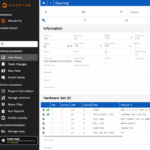 Lawmakers in Delaware are scheduled to vote this week on a bill that mandates certain security features in new schools and schools which undergo major renovations. Although this bill would only have a direct impact on schools in Delaware, other states may consider similar legislation if the bill is successfully passed into law.
Lawmakers in Delaware are scheduled to vote this week on a bill that mandates certain security features in new schools and schools which undergo major renovations. Although this bill would only have a direct impact on schools in Delaware, other states may consider similar legislation if the bill is successfully passed into law.
The synopsis of Delaware House Bill 49 is: “This bill requires all new school construction or major renovation to include the following features: an intruder alarm, bulletproof glass in entrance areas and interior doors and windows, and doors lockable with keys on both sides. Further, the bill would require all new school construction plans to be submitted to the Office of Management and Budget’s Facilities Management Section for compliance with these requirements as well as with Crime Prevention through Environmental Design principles.”
What do you think? Did Delaware get it right?
You need to login or register to bookmark/favorite this content.





I think the terms “intruder alarm” and “bulletproof glass” need to be more clearly defined as they could include a very wide range of products. “Doors lockable with keys from both sides” is acceptable but should be expanded to prohibit the addition of any of the many jerry-built security devices which are on the market.
All in favor of improving security but do they realize how expensive ballistic resistant (no such thing as bulletproof) glazing is? I think not.
I see more schools going to an inside push button or turn. One administrator posed a hypothetical question, is the liability greater if a kid locks a teacher out or if the teacher can’t lock the door in an emergency?
In fact I was in a large school that was equipped with mortise locks and keys on both sides. The principal provided the teachers with the magnetic strips to cover the strike. The reason was the teacher fumbled with the key.
I was in a district that installed storeroom locks on all the classrooms. The superintendent told the principals, remember when I said you couldn’t chock the doors open because of fire code? Well I guess it’s OK now.
I am for quick and easy lockdown. The next generation of teachers will grow up knowing how to lock a door and not to walk out of the classroom when the room is occupied.
How much is enough? Big brother forces more and more. The undesirable people will most likely just plan a way around the new barriers. Most of the schools that I get into still have wood blocks holding the doors open. People’s actions are the biggest challenge.
I am not trying to be negative, and I want to be empathic to anyone who has ever lost someone in such a tragic and senseless event, I just think we need a reality check.
What would happen if we put some serious consideration into enforcing the Fire Door Assembly and Means of Egress Inspection? Supply good quality hardware and follow through to see that it actually works.
It’s pretty close but the requirement for a key on the inside might need to be re-considered. I know that we have always thought that students should not be allowed to lock a door on their own but at least in my area (So. Cal) I’m getting more and more requests for “Office” function on classrooms. The reason for this is that parents want their children to be able to protect themselves in the event that someone with a key is not there to lock the door. They can get quite vocal at PTA meetings! I’ve personally consulted with several organizations that admitted in an active shooter event there was no one with a key nearby and students were forced to pile desks and chairs in front of the door in an effort to protect themselves. I think better language would be the requirement that the doors be lockable from the inside and leave it to each organization to decide if they want keyed cylinders or T-turns.
Definitely NOT
Keys on the inside?? What fire inspector would ever approve that?
Hi Domenic –
I think they are looking for classroom security locks – the key used in the inside key cylinder locks/unlocks the outside lever. The inside lever is always free for immediate egress.
– Lori
I think the code needs to be more specific about the lock function. Merely stating that it needs to be “lockable with keys on both sides” will cause confusion between a classroom security and asylum function. You and I know what the bill implies, but not the building maintenance engineer.
I think they got it partially right; but they are missing some key issues. Items such as visitor management, door prop detection, access control and intercoms are the basics. I am also pleased to see CPTED compliance is required and not just a design “review”.
We’re seeing some facilities going away from keys on the inside locking mechanism to thumb turns or push buttons due to the complexity of inserting some patented keys into cylinders under high stress conditions.
One system uses storeroom function for all classroom doors.
We’re also seeing facilities expanding this functionality past classrooms to assembly spaces with panic hardware such as cafeterias, media centers, gyms, auditoriums, etc.
Visual status indication is also requested and beneficial for these applications.
First, you cannot really buy “bullet-proof” glass (remember the old fire-proof hotels of my past?). The use of the term “bullet-proof tells me that they did minimal to no research on the subject they are legislating. I would recommend they consider the term “bullet-resistant” or rather think about what they are requiring. A level 1 bullet resistant glass laminate will fail after 3 closely space 9 mm rounds hit it. It will likely stay in the frame. A level 2 bullet resistant glass laminate will fail when 3 rounds of .357 magnum rounds hit it in a similar fashion. A level 3 bullet resistant glass laminate will fail when 3 rounds of 7.62 mm hit it. A gunman with a 30-06 rifle will penetrate Level 4 bullet resistant glass with a single shot. All this depends on the power charge, angle of entry, etc. and other parameters as well. The challenge posed is posed by all the different types, weights and velocities of projectiles as well as the frequency they hit the glass. The glass must go into a practical door. One square foot pieces of bullet resistant glass varies from 15.25 pounds per square foot to 20.94 pounds per square foot which probably limits the viewing areas to a 100 square foot fire window like structure. The glass thickness also poses some problems for existing thickness doors. Hinges and door structure could be important due to the weight. “But wait, we’ll double the problems…” Why aim at the window when the door itself, its fastening means and the wall it is mounted in are almost transparent to bullets with any common weight and velocity? A study showed that a 2 hour fire wall construction of 4 sheets of 5/8″ drywall were totally ripped up by a .223, 9 mm and .45 caliber weapon. I would not be so worried about the window as the entire separation components. This brings up the important parameter, the exit velocity of the bullet. Even with 4 each 5/8″ dry wall boards, the bullet has little change in velocity. In my opinion they are proposing an inadequate facilities solution that can easily be circumvented. Even lead lined walls and doors use in medical facilities are not likely to be adequate to an intentioned person. I have no solution to pose.
It is good to see that Delaware is being proactive on the intruder front. Baltimore County in Maryland Delaware’s neighbor has moved to classroom doors with storeroom locks, no closers and floor mount holder door stop. I like what I see, between classes the classroom doors are opened and held open. When class begins doors are closed and locked. Lock down is not necessary. Students learn pretty quick to get to class on time or risk being locked out.
Poorly worded and incomplete. Bullet proof? No such thing. And they only mention the glass. What about the doors and walls? Do they have any idea of the costs involved? Where is any mention of limiting movement within the school? Mandating keys inside? Are they more concerned with bullets going through the glass or with someone reaching through the broken glass to operate the inside lever? I clicked on the link and the actual bill does nothing to improve the wording or the effectiveness (or lack thereof). Too many issues to address here. I had more written but decided it sounded to cynical.
Good start. Critical pieces missing in the building perimeter piece would include:
– secure vestibules
– door position switches
– latchbolt monitors
– monitoring of openings (DPS and LX)
Other items would be patented keys, limited key access in exterior openings, EO trim on secondary and tertiary openings. See PASS guidelines. http://www.passk12.org.